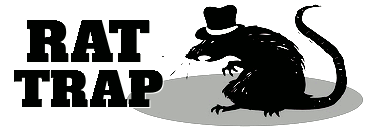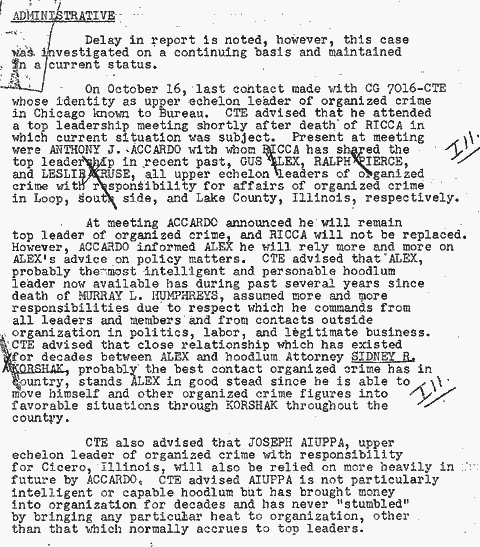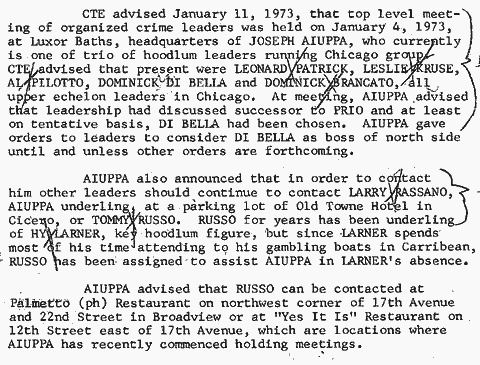[Editor's note: Ralph Pierce was introduced as an FBI informant in Edmond Valin's earlier article, "Roemer's men in the Outfit: 'Sporting Goods' and 'Romano."]

Pierce
Ralph Pierce was a longtime Outfit member who controlled gambling activities on the South Side of Chicago at the time of his death in 1976. The Federal Bureau of Investigation described Pierce as "one of the top half-dozen leaders of organized crime in Chicago for decades." [1] He was also the FBI's most productive confidential informant inside the Outfit during the 1970s. [2]
Personally recruited and handled by FBI Agent William Roemer, Pierce cooperated roughly between 1966 and 1976. [3] It appears Pierce's decision to cooperate was mainly the result of Roemer's careful strategy to cultivate a friendship with him. [4] Their first interactions were "chance" meetings "contrived" by Roemer. [5] Roemer would covertly seek out Pierce in public places like restaurants and engage him in small talk. Unbeknownst to Pierce, he was being groomed by Roemer. Eventually, a rapport developed between them, and Roemer was able to extract nuggets of information from him. [6] It’s likely Pierce didn’t even think of himself as a confidential informant as this point.
Pierce's prominent underworld status made him ideally suited to provide high-level Intel on the Outfit. He told the FBI about corrupt police captains and politicians, changes in the Outfit hierarchy and the criminal activities of his associates. At a time when the FBI didn't have reliable informant coverage, Pierce was the go-to for information.
Pierce strikes a deal
"[Pierce] has now agreed to meet privately with contacting agent after coded message left at his headquarters." [85]
"On March 9, 1967, contact was made with him by SA William F. Roemer, Jr. It is the normal procedure of this source to evade direct questions put to him, but to be generally responsive when conversation is directed into general matters of investigative interest in areas where it is known the source is knowledgable. However, inasmuch as his answers in response to this technique are not specifically responsive to any question asked, the information which he provides is therefore subject asked, the information which he provides is therefore subject to interpretation and conclusions by the contacting Agent." [86]
The FBI designated Pierce a potential criminal informant - a "PC" - of the Chicago office in 1966. This meant he shared some information with the bureau but he still held back a lot of what he knew. [7] His secret FBI informant symbol code was "CG 7016". [8] To protect his anonymity, the symbol code was used every time he supplied information to the FBI. His codename was "Sporting Goods." [9]
The confidential relationship deepened in March 1967, when Pierce agreed to formally meet with Roemer in private. This was likely the period of time when they began to have secret weekly dinner meetings together, as described by Roemer in his memoir. [10] Over dinner and drinks, Roemer would nimbly try to steer the conversation to areas of interest to the FBI. Like before, Pierce refused to answer direct questions and the answers he did give were subject to "interpretation," but Roemer was able to learn enough about Outfit activities to begin to fill FBI reports regularly.
As late as 1970, the FBI maintained that Pierce hadn't "been developed to the point where total reliability is evident." [11] His informant status changed around 1972 when he was designated a top echelon informant, or "C-TE." [12] This designation was reserved for the best sources. The Intel supplied by Pierce became more detailed and incriminating after that.
A fraction of Pierce's informant file has been declassified (with some redactions), so we are offered only a glimpse of what he shared. Not everything he said was necessarily accurate, informants often got minor and sometimes significant things wrong, but it's included here to show his importance to the FBI's battle against organized crime. The bulk of Pierce's disclosures to the FBI date from the first half of the 1970s.
Samuel Giancana
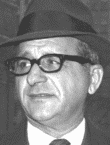
Giancana
Some of the earliest Intel supplied by Pierce concerned Samuel Giancana, the onetime boss of the Outfit. Pierce and Giancana had been close associates going back decades, collaborating in gambling activities and political racketeering. Probably no mobster in the 1960s took up more of the FBI's interest and manpower than Giancana.
In 1966, after ten years of leading the Outfit, Giancana was ousted as boss. He had only just been released from jail after serving a one-year sentence for contempt. By this time, however, his front-page lifestyle and endless run-ins with the FBI had worn thin with the other Outfit leaders and they decided to replace him. Looking for a fresh start, Giancana went into self-imposed exile in Mexico.
The FBI lost track of Giancana after he vanished from Chicago. The FBI was eager to find him but didn't have a lot to go on. Its eavesdropping surveillance program, which provided solid Intel in the past, had been shut down and it scarcely had any good Outfit sources. Roemer turned to Pierce for help, even though he had just begun to be developed as a source.
At first, Pierce denied knowing Giancana's whereabouts. He only confirmed that Giancana wasn't in Chicago and that nobody in the mob knew where he was. When Roemer questioned the accuracy of his information, Pierce said he would know if Giancana was in Chicago. Pierce promised to tell him if Giancana ever returned home. [13]
As the months dragged on and the FBI continued to hassle mobsters and hunt down every false sighting of Giancana, Pierce said the Outfit wished the whole mess would go away. [14] [15]
According to Pierce, the negative publicity generated from Giancana's release had focused the public's attention on organized crime. It put the FBI's performance under a spotlight which "backfired" on the Outfit and made it harder to operate. The "media" was now pushing the government to take a "'tough' course against hoodlum group" to prove the "skeptics" wrong. Pierce said Outfit leaders were worried they could all be "dragged down the drain" as a result. [16] They wished that Giancana had been imprisoned "without fanfare."
Eventually, the FBI developed Intel through the Mexican government that indicated Giancana was living there. Roemer asked Pierce to confirm the rumor. After initially denying he knew anything, Pierce admitted to the FBI that "they would find Mexico 'very interesting.'" [17] This was the first time a member of the Outfit had tipped off the FBI about Giancana's whereabouts.
After Giancana relocated to Mexico, he had limited contact with his old associates. Pierce said Dominic Blasi and Pat Marcy both kept an eye on Giancana's legitimate business interests in Chicago. And Richard Cain helped him out in Mexico. [18] For the most part, though, Giancana and the Outfit forgot about each other and moved on. From his new home in Mexico, Giancana went about building a gambling empire in the Caribbean and in Iran.
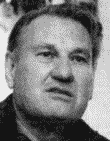
Roemer
Things changed in 1974, after Giancana was deported from Mexico and returned to Chicago. The Outfit once again took an interest in Giancana's activities and began to wonder about all the money he was making. A year later, Giancana was murdered gangland-style in his home by an unknown assailant.
Local law enforcement, which had jurisdiction in the case, investigated the murder, but no arrests were ever made. The FBI had received conflicting information from sources about who was behind it. Dominic "Butch" Blasi, Giancana's closest associate in the Outfit and a secret FBI source, told Roemer that he believed the "murder was accomplished by forces outside of organized crime." [19] Pierce had a much different take.
Pierce told Roemer that if he "knew the truth [he] wouldn't believe it." [20] He said that Giancana's death was not the result of a "power play by young hoods" as some newspapers had speculated after the murder.
According to Pierce, Giancana came into conflict with the Outfit after he refused to share a "highly lucrative source of income" that he had allegedly developed while he was boss in the 1960s. The Outfit leaders “badly wanted” a “cut” of his global gambling empire. Giancana claimed the business belonged to him and he wouldn't give any profits to Anthony Accardo, Joseph Aiuppa or Gus Alex. [21] In Pierce's view, Giancana was killed because of his stubbornness.
Gus Alex
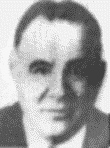
Alex
The greatest contribution Pierce may have made as a criminal informant was to help the FBI track the movements and activities of his boss, Gus Alex, the top non-Italian leader in the Outfit. An important mobster for nearly as long as Pierce, Alex was responsible for developing and maintaining the Outfit's political connections and law enforcement protection, as well as for overseeing criminal activities in the Loop area. [22] [23] He later became the Outfit's top adviser in the 1970s.
Pierce would routinely tell Roemer about Alex's meetings in advance so federal agents could stake out the location (usually a restaurant) and determine who Alex was meeting with. [24] He would also tell the FBI when Alex was traveling to Europe or staying at his second home in Florida so they could monitor his movements. [25] [26] [27]
Pierce said Alex had three "message drops" where he could reached: Celano's Custom Tailors, Apex Amusement Company and the offices of attorney Maurice Walsh. [28]
Alex's routine
According to Pierce, Alex would eat lunch daily at one of his favorite restaurants in Chicago's Loop-area. A criminal associate like Leslie Kruse or Pierce would often join him to discuss business, although that later stopped when Alex became a member of the ruling panel. After lunch, Alex would go for a swim at the Riviera health club. Alex followed up with a steam bath and a massage, before taking a nap at the club. He returned home in the early evening. Pierce said Alex didn't like to socialize in the evening because his anxiety and nervous condition left him tired. [87]
In 1971, Pierce told Roemer that Alex had decided to relocate his base of operations to Fort Lauderdale, Florida. He hoped to slowly withdraw himself from Outfit responsibilities and semi-retire. Alex had an ongoing issue with nervous tension, and his wife was battling cancer at the time.
According to Pierce, Alex planned to "pattern" himself after Dave Yarras, another Chicago mobster. Yarras, the top Jewish gangster in the Outfit, now lived full-time in Miami but kept active with some rackets back in Chicago. He went back and forth between cities as needed. (As it turned out, mob life intervened and prevented Alex from retiring to Florida.) [29]
In anticipation of his planned move to Florida, Pierce said Alex gave permission to his right-hand man, Hy Godfrey, to retire to San Diego, California. Godfrey, a former boxer, had acted as Alex's appointment secretary and bodyguard for years. Pierce said that Nathan "Butch" Ladon had replaced Godfrey. Ladon had been Alex's bodyguard in the 1950s and 1960s but, more recently, he had been working with Edward Vogel. Pierce said Alex didn't need a large organization around him because he had "very little [criminal] interest[s] ... in Chicago." [30]
Vogel was a longtime racketeer who operated the Apex Amusement company. The company operated jukeboxes and cigarette machines in Chicago for decades. It was a "prime source of income" for the Outfit. [31]
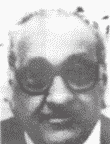
Accardo
According to Pierce, Vogel and Alex had been criminal associates for over thirty years. Alex viewed Vogel as his "mentor" and had a "sentimental attachment" to him. Vogel wintered in California. He sometimes stopped in Las Vegas on his way to Palm Springs to stay at the home of his girlfriend. Pierce let the FBI know anytime Alex traveled to California to visit Vogel. For example, the purpose of one 1967 visit to Los Angeles was to "relax in the sunshine and cheer Eddy up." [32]
Vogel's health had deteriorated by 1974 and he had relocated permanently to California. [33] Pierce reported that he was residing at the Carriage House rest home in Encino. It cost $1,000 per week.
Pierce said Alex had taken over the Apex Amusement company from Vogel. He spent about two hours every day running it. [34] Alex was trying to corner the market on cigarette machines in Chicago with the help of Hyman "Red" Larner. [35]
At the beginning of 1972, Pierce said Alex's stature in organized crime had risen dramatically in the last year or so as Anthony Accardo and Joseph Aiuppa began to rely on his advice more and more. [36] Pierce's statement was right on the money because, later that year, Alex would be promoted to the Outfit's ruling panel.
Alex's health
It was common knowledge in the Outfit that Gus Alex suffered from hypertension and stress-related issues that sometimes required him to be hospitalized. From time to time, Alex would leave Chicago and go away to recharge his batteries. His medical condition seems not to have given his bosses much concern and did not keep him from rising to the top of the Outfit
The FBI first learned about Alex's medical condition from a listening device hidden in an Outfit hangout. But Pierce himself was the FBI's best source for information about his boss' illness.
According to Pierce, Alex was a "highly nervous individual who becomes very upset easily and magnify's problems." [37] In 1968, Pierce told the FBI that Alex had suffered a "relapse into his highly nervous state and was advised by physicians he was 'close to another nervous breakdown'". [38] He said Alex suffered his first nervous breakdown in 1959 and was confined to a "rest home in Connecticut." More recently, Alex was prescribed "sleeping and tranquilizing pills" and ordered to go on vacation to "get away from his problems." Pierce said Alex's health took a nosedive after he was publicly linked to gambling casinos in Britain. [39]
Alex made annual visits to the Mayo Clinic in Minnesota to treat his "extreme nervous condition." [40] Doctors told Alex that his condition was brought on by his work and advised him that the only way to "alleviate" it would be to step away from his responsibilities in the Outfit. After one visit in 1970, Pierce said Alex was prescribed a "considerable" amount of unknown drugs to deal with his nervous tension. [41]
Pierce told Roemer that one way Alex treated his stress was to visit his brother's farm in Cassopolis, in southwest Michigan. Sam Alex was another longtime mobster who worked sometimes for Joseph Aiuppa. [42] The farm gave Gus Alex an opportunity to relax and get away from his troubles running the Outfit. He always came home refreshed. [43]
'Connection guys'
Besides overseeing gambling rackets on Chicago's South Side, Ralph Pierce was part of a group within the Outfit called the "connection guys." Headed by Gus Alex, the group was "assigned the permanent responsibility to develop and maintain contacts to be used when leaders and members organized crime need help and particularly when they are on trial." [44] The connection guys used payoffs and intimidation to influence politicians, judges and law enforcement officials to get favorable treatment for the Outfit.
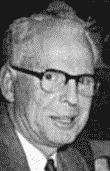
Humphreys
The other primary members of the connection guys were Lake County boss Leslie Kruse, Democratic party operative and La Cosa Nostra member Pat Marcy, and Los Angeles attorney Sidney Korshak. [45] Pierce said Murray Humphreys headed the group before Alex. [46]
According to Pierce, each member of the "connection guys" had a specialty. Alex had primary responsibility for handling labor-issues. Marcy had responsible for making sure politicians did the bidding of the Outfit. Pierce said Alex, Kruse and himself dealt with with law enforcement officials and handled any Outfit deals involving legitimate businesses. Other individuals who helped out from time to time with labor matters were LCN members Joseph Glimco, Eco Coli, Al Pilotto, Vincent Solano and Dominic Senese. [47] Labor specialists James Kennedy, Allen Dorfman and Gus Zapas were also part of the mix.
Pierce gave a two examples of the kind of work the group did on behalf of the Outfit. In 1967, Outfit leaders wanted to stop passage of a bill in the Illinois State General Assembly that would have allowed the police to "stop and frisk" any person they had reason to believe had just committed a crime or was about to commit a crime. The bill would also have given police the right to search an individual for weapons. Pierce said the Alex, with the help of Kruse and himself, had been instructed to lobby all their political and judicial contacts to defeat the bill, which they did. [48]
Another time, the connection guys were tasked by Samuel Giancana to ensure Outfit members William Daddano and Richard Cain were acquitted at their robbery trial. [49] Daddano and Cain had been arrested for conspiring to rob a bank and were facing stiff prison sentences. Alex reached out to all his contacts and attempted to "move heaven and earth" to help Daddano and Cain get out from under the charges. Pierce said the connection guys lost a great deal of prestige after Daddano and Cain were found guilty.
Alex's failure to get Daddano and Cain acquitted exacerbated his nervous condition and led to near "emotional collapse." Pierce said Alex ended up checking himself into the Mayo Clinic for treatment.
Outfit hierarchy in 1956
Pierce told Roemer an anecdote that gave a glimpse into the Outfit power structure as it was in 1956. [50] That year he was summoned to a meeting at the Armory Lounge by Anthony Accardo, Paul Ricca, Frank Ferraro, Murray Humphreys and Samuel Giancana, the five most powerful Outfit mobsters at the time. (Of these five mobsters, only Humphreys wasn't also an LCN member.)
Also summoned to the meeting with Pierce were Gus Alex, Leslie Kruse and Edward Vogel, the highest-ranking, non-Italian Outfit members. (Chicago was unique among LCN crime families for the influence of non-Italians at the highest levels.) Pierce said they were informed, he didn't say by whom, that Accardo had stepped down as boss and that Giancana was taking over.
Pierce said that "when the decision was made to elevate Giancana to take Accardo's spot as top leader of organized crime, [the] decision was made by Accardo, Ricca, Frank Ferraro and Humphreys." The exact mob hierarchy from this period is somewhat sketchy but It is generally assumed that Giancana was Accardo's underboss, and that Ferraro was Giancana's underboss.
This raises the question about Ferraro's actual rank in the Outfit hierarchy prior to 1956 and how he could help make Giancana boss if he was Giancana's supposed junior?
AAA
After Paul Ricca died of natural causes in 1972, Pierce updated the FBI on the new Outfit hierarchy.
Prior to his death, Ricca had jointly shared final decision-making responsibilities with Accardo.
Accardo told Pierce that he was now sole leader of the Outfit and Ricca's position wasn't going to be replaced. To help him manage the Outfit, Accardo appointed Joseph Aiuppa to operate as something like a street boss with Gus Alex as his top advisor. [51] The FBI called the new ruling panel the Triple A group.
Accardo told Pierce that he would set policy and make all the big decisions himself, but he would leave the day-to-day operations to Aiuppa and Alex. Accardo became the "Chairman of the Board," while Aiuppa was the "managing operator" of the Outfit. [52] Aiuppa would be the face of the ruling panel and the point of contact for Outfit members. The fact that Alex, a Greek, was put on the panel shows the esteem Accardo had for him and suggests he would have been named street boss if he was Italian.
The unorthodox arrangement functioned efficiently. Aiuppa would meet with Outfit members and try to resolve any issues in accordance with Accardo's big picture policies. If the problem was too complicated for him to handle alone, Aiuppa would consult with Accardo and Alex in private before coming to a decision. [53]
No member of the panel actually wanted to be part of it. According to Pierce, Accardo and Alex both wanted to "disassociate" themselves from the front lines of the Outfit and were reluctant to meet face-to-face with other members. It made sense for them to minimize their risk as much as possible.
Even Aiuppa accepted his promotion with some reluctance. Like Alex, Aiuppa would have preferred to semi-retire to Florida. Pierce said that Alex and Aiuppa were only persuaded to take on their new responsibilities after Accardo made a personal appeal.
Accardo decreed that at least one of Aiuppa or Alex had to be present in Chicago at all times and be available to deal with any issues that came up. As well, Accardo told all the "upper echelon leaders" in the Outfit that all policy decisions had to "cleared" through either Alex or Aiuppa. [54]
By this time, Accardo was spending winters in California and was frequently away from Chicago. Likewise, Alex was often traveling. So much of the burden of running the Outfit fell to Aiuppa. Aiuppa seems to have developed some enthusiasm for the role once he got used to it. Pierce said Accardo and Alex continued to communicate with Aiuppa in their absence through "couriers and telephone." [55]
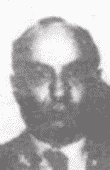
Patrick
Pierce said Joseph Aiuppa, after taking over as street boss, met with underlings at the Luxor Baths in Cicero. Cicero, a Chicago suburb, was Aiuppa's home-turf. The meetings took place in the facility's restaurant, on Mondays, Tuesdays and Thursdays. Hoodlums like Al Pilotto, Joseph Lombardo, Leonard Patrick and Leslie Kruse were all spotted there. Pierce said Aiuppa's appointment secretaries were Larry Rassano and Tommy Russo. Russo used to work for gambling figure Hy Larner. Another way to contact Aiuppa was through Anthony "Bucky" Ortenzi, who could be reached at the Marquis or Itsa Nice restaurants. [56]
According to Pierce, Alex was always looking to quit the panel. [57] Alex knew it made him a bigger target for the FBI. Sam Battaglia and Felix Alderisio, two previous Outfit street bosses, had ended up with long prison sentences.
Alex hoped he would be allowed to retire as soon as John Cerone was released from a short prison sentence and could replace him. Cerone was a protégé of Accardo and had been the street boss briefly before Ricca died. [58] Pierce said Accardo and Aiuppa were considering Alex's request because of his poor health.
Outfit hierarchy in 1972
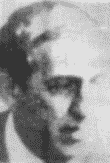
Frank Buccieri
In addition to describing the new ruling panel, Pierce gave a breakdown of the Outfit crew bosses and their lieutenants in 1972. [59] This kind of Intel helped to clarify the Outfit chain of command and allowed the FBI to concentrate its investigative resources in the most appropriate areas.
Pierce told Roemer that the West Side of Chicago was controlled by Fiore "Fifi" Buccieri. He was assisted by his brother Frank Buccieri and James "Turk" Torello. Arnold Garris handled his gambling operations on the West Side and in the Loop. Buccieri would probably be more "involved" consulting with Accardo, except for his "health." Pierce said Buccieri's health was bad and he expected him to "die any day." He said Torello would likely succeed him. [60]
Ross Prio had the North Side of Chicago. His top lieutenants were Joseph "Caesar" DiVarco and Joseph Arnold. Rogers Park in the Far North Side was controlled by Leonard Patrick. Joseph Epstein was his top lieutenant.
After Prio died of natural causes at the end of 1972, Roemer tapped Pierce again to identify his successor. [61] Pierce said Dominick Di Bella, an important lieutenant for decades, had replaced Prio on a tentative basis. [62] Joseph DiVarco and Joseph Arnold would have been considered for the role, except both men were currently in jail for tax evasion.
Frank Laporte controlled Cook and Will counties. Pierce said that despite what the FBI might have heard, James "the Bomber" Catuara still reported to Laporte and had to clear all his activities beforehand with him "out of respect." Al Pilotto and Dominic "Toots" Palermo worked for Catuara.
LaPorte died later that year. Pierce told the FBI that it was unlikely that Catuara would get the nod to succeed LaPorte because he was going on trial in federal court. Pierce speculated that Al Pilotto would get the spot, if Accardo wanted to promote a younger man. [63]
Quick hits
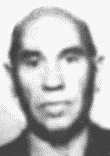
Catuara
Pierce gave his personal observations about a number of his close associates. He was mostly positive toward them, even as he put them in the FBI's crosshairs.
He described Gus Alex as "probably the most intelligent and personable hoodlum leader" in the Outfit. [64] He said Alex was highly respected in the underworld and by legitimate contacts in the political, labor and business worlds alike. It speaks well of Alex's abilities and temperament that a subordinate would have such a positive opinion of him.
Pierce told Roemer his closest associate in the Outfit was Lake County boss Leslie Kruse. He described Kruse as an "exceptionally intelligent and personable individual whose judgement [was] almost as good as Alex's". [65] He said Kruse was very close to Murray Humphreys and Samuel Giancana in the past.
Nonetheless, Pierce's close friendship didn't prevent him from feeding the FBI incriminating information about Kruse's whereabouts and his criminal activities. [66] He said Kruse had assumed a greater role managing some of Gus Alex's business affairs in the 1970s. For example, Kruse represented Alex's gambling interests in Las Vegas where the Outfit secretly controlled some casinos. [67] He acted as courier for the skim received by Alex and the Outfit. Pierce told Roemer that Kruse stayed at the Stardust or Dunes hotel when he was in town.
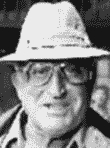
Aiuppa
Pierce described Sidney Korshak as "probably the best contact organized crime has in [the] country." Alex and Korshak had been close friends for decades. Alex handled all Outfit contact with Korshak. According to Pierce, Korshak had unrivaled connections in the political and business worlds that allowed Alex to "move himself and other organized crime figures into favorable situations…throughout the country."
One way Korshak made money for the Outfit was by conspiring with labor unions to squeeze secret payments from companies he targeted in strikes. Outfit-controlled unions threatened to strike against a company unless the owners paid Korshak for labor peace. Pierce said this had been a very profitable enterprise in the past but was turning out to be less lucrative in the 1970s. [68] According to Pierce, Korshak was also involved in "all aspects of [Outfit] business in Las Vegas."
Pierce had an unfavorable view of Joseph Aiuppa. He described Aiuppa as a "not particularly intelligent or capable hoodlum but [he] has brought money into organization for decades and has never 'stumbled' by bringing any particular heat to [the] organization." [69] He implied Aiuppa got elevated to the top spot because Accardo had run out of better options.
Assorted Intel
Pierce gave information on a host of Outfit mobsters and their activities. One particularly noteworthy piece of Intel was that certain associates of the Outfit could be involved in narcotics trafficking. This raised some eyebrows in the FBI's Chicago office because it was generally accepted that the Outfit under Accardo avoided dealing in narcotics.
In a debriefing from 1972, Pierce said that Joseph Aiuppa had recently been spending time with Angelo Di Pieto, Ernest "Rocky" Infelise and Hyman "Red" Larner, three mobsters who had at one time had been associated with narcotics. [70] This was significant because Aiuppa would soon be named street boss.
Pierce told Roemer that he had no direct knowledge of any narcotics deals. But Aiuppa may have financed "narcotics operations out of desperation in view of drastic falling off of income to organized crime and particularly to Aiuppa's group from traditional sources of illegal income such as from gambling and 'juice.'" Pierce said that Larner operated gambling boats around the world with Samuel Giancana which were "perfect setups for narcotics."
Pierce didn't provide anymore details about narcotics deals but he wasn't the only Outfit informant talking at that time about drugs. Another unknown informant told the FBI that Gus Alex complained to him that some "'people' [in the Outfit] are now financing narcotics for other interests and are making good money." [71] Alex said he wanted "nothing to do with narcotics," and would have presumably stopped anyone within his power from dealing in narcotics. Yet, even though Alex was third in rank in the organization, his words imply a resignation that whoever was involved with narcotics was beyond his control to discipline. Could he have been referring to Aiuppa?
Pierce's health
Pierce was over sixty years of age when he first began to cooperate and had already begun to show signs of slowing down. In the summer of 1967, Pierce told Roemer that he hadn't left his home for two days because he was suffering from "dizzy spells and nausea." He said he had an x-ray done to his jaw and the doctor advised him that an biopsy was necessary. [88] A few months later, Pierce suffered another fainting spell that kept him housebound for several days. Pierce said doctors were unable to determine the cause of his condition. [89]
Pierce said Aiuppa oversaw the Outfit's "hit squad." [72] All gangland murders were handled by mobster's under Aiuppa's control. Pierce didn't provide the names of any hitmen but he was most likely taking about mobsters like Harry Aleman, Anthony Spilotro and Frank Schweihs, who did much of the killing for the Outfit in the 1970s.

Spilotro
According to Pierce, the Outfit had a great deal of influence over certain unions in Chicago and across the United States. For example, Pierce alleged that union leader Ed Hanley, president of the Hotels and Restaurants Employees International Union (known as the Motel-Hotel and Bartenders' Union in 1973) took orders from Joseph Aiuppa. [73]
One of Alex's closest associates in the early 1970s was labor leader James Kennedy. Alex and Kennedy socialized in Chicago and in Florida. He encouraged Alex to buy a condominium in Fort Lauderdale. [74]
Pierce told Roemer that Outfit member Charles English was a "special friend" of Samuel Giancana. As a result, Giancana gave his childhood friend a "special concession" to operate his phonograph record company anywhere in Chicago. English wasn't restricted to operate in a specific geographical area like other Outfit members. [75] After his protector was killed, English fell into disfavor and was killed gangland-style in 1985.
When the Outfit required legal advice, it often turned to mob lawyers George Bieber and Michael Brodkin. Bieber and Brodkin had provided legal advice to the Chicago underworld for over forty years. In fact, the FBI considered Bieber and Brodkin to be an "extension of the connection guys." [76]
But by the late 1960s, the two lawyers had had a "bitter series of arguments" and their law partnership was in jeopardy. This didn't sit well with the Outfit, which didn't want to see a good thing ruined. Pierce told the FBI that Alex was "spending considerable time patching up differences" between the two lawyers in an effort to keep them together. [77] [78] Pierce said nobody liked Bieber or Brodkin but tolerated them because "we need them to do certain things for us." The pair would eventually go their separate ways despite Alex's best efforts. [79]
Pierce contrasted the Outfit's loathing for Bieber and Brodkin with the "personal liking" most members had for Maurice Walsh, another mob attorney. Walsh specialized in handling federal cases. He worked very closely with Alex. He kept a "hideaway" office to meet privately with Alex and the other top mobsters and not be observed by law enforcement. [80]
In 1971, Pierce said Alex had discontinued his "long-time practice" of meeting criminal associates for business lunches at restaurants. Instead, Alex now held his meetings in Walsh's office. [81] Outfit members later grew "disenchanted" with Walsh after he lost a number of court cases. [82]
Pierce said Phil Ponto was the gambling boss at the Stardust casino in Las Vegas. Ponto got his job through Gus Alex's influence. They were childhood friends.
According to Pierce, Aiuppa used a radio receiver to listen to the FBI's police frequency in an attempt to avoid surveillance. [83]
Conclusion
The available FBI reports don't indicate why exactly Ralph Pierce decided to respond to overtures from the FBI and share confidential information. On the surface, he wasn't an individual who seemed vulnerable to the pressures that commonly lead other mobsters to cooperate: he didn't need the money, his life wasn't in danger and he wasn't facing any serious criminal charges.
What is clear is former FBI agent William Roemer put himself in front of Pierce and was able to take advantage of the opportunity when it presented itself. Pierce became one of the FBI's "best" informants and his information was critical in the battle against the Outfit. [84]
Notes
1 FBI, Samuel Giancana, Chicago Office, Nov. 30, 1976, NARA Record No. 124-10205-10086. There is some indication that Pierce may have been retired or partly retired by 1974.
2 The FBI almost never reveals the identity of a mob informant against his will. The FBI will protect his anonymity even after he dies. To see the full case against Pierce, please refer to "Roemer's men in the Outfit: 'Sporting Goods' and 'Romano,'" by Edmond Valin.
3 FBI, Samuel Giancana, Chicago Office, June 10, 1966. The earliest known date Pierce supplied information was June, 1966.
4 The FBI began to recruit mob informants with greater urgency in the mid-1960s after the Department of Justice forced the Bureau to discontinue its electronic surveillance program.
5 FBI, Gus Alex, Chicago Office, March 10, 1967, NARA Record No. 124-10209-10338.
6 Many mobsters seem to have responded well to Roemer's professionalism and sincerity. He displayed a care for the whole person that was partly inspired by his strong Catholic Faith.
7 An informant of Pierce's stature would likely be compensated for his information, but the available FBI reports don't make mention of it.
8 The "CG" refers to the Chicago office and "7016" was Pierce's unique numerical identifier.
9 William F. Roemer, Jr., Roemer: Man Against the Mob, New York: Donald I. Fine, Inc., 1989, 344. Roemer identified an informant thought to be Pierce as "Sporting Goods." The available FBI reports don't explain the significance of the codename "Sporting Goods."
10 Roemer: Man Against the Mob, 344.
11 FBI, Samuel Giancana, Chicago Office, Feb. 5, 1970, NARA Record No. 124-10205-10148.
12 FBI, Richard Cain, Chicago Office, July 18, 1972, NARA Record No. 124-90059-10039. Here's one of the earliest examples of Pierce's "C-TE" designation.
13 FBI, Samuel Giancana, Chicago Office, July 5, 1967, NARA Record No. 124-10208-10106. In 1967, Pierce said no mobster had seen Giancana in Chicago since he went off to jail in 1965; FBI, Samuel Giancana, Chicago Office, July 22, 1972, NARA Record No. 124-10201-10204, And in 1972, Pierce claimed Giancana hadn't been in Chicago since he left jail in 1966.
14 FBI, Samuel Giancana, Chicago Office, Sept. 16, 1966, NARA Record No. 124-10198-10120, Pierce passed on the false rumor that Giancana was seen in Chicago playing cards with Outfit member and close friend William Daddano.
15 FBI, Samuel Giancana, Chicago Office, May 28, 1971, NARA Record No. 124-10201-10174. The FBI correctly perceived that Giancana's absence from Chicago would result in a power vacuum and a major disruption in the affairs of organized crime that could work in its favor.
16 FBI, Samuel Giancana, Chicago Office, June 21, 1966, NARA Record No. 124-10203-10048.
17 FBI, Samuel Giancana, Chicago Office, Nov. 16, 1966, NARA Record No. 124-10198-10136.
18 FBI, Joseph Aiuppa, Chicago Office, Dec. 27, 1972, NARA Record No. 124-10210-10249.
19 FBI, Samuel Giancana, Chicago Office, Nov. 30, 1976, NARA Record No. 124-10205-10086. Many in law enforcement thought Blasi was the shooter. Roemer disagreed despite Blasi being the last person to see Giancana alive. The fact Blasi was an informant may have clouded Roemer's judgement. The "outside forces" could be an allusion to the Central Intelligence Agency and Giancana's alleged role in the plot to kill Cuban dictator Fidel Castro (See CIA joins with Mafia in effort to kill Castro").
20 FBI, Samuel Giancana, Chicago Office, June 27, 1975, NARA Record No. 124-10202-10403.
21 FBI, Samuel Giancana, Chicago Office, Nov. 30, 1976, NARA Record No. 124-10205-10086; Roemer: Man Against the Mob, 353.
22 FBI, Gus Alex, Chicago Office, Jan. 14, 1974, NARA Record No. 124-10194-10428.
23 FBI, Gus Alex, Chicago Office, Nov. 18, 1972, NARA Record No. 124-10197-10255.
24 FBI, Samuel Giancana, Chicago Office, July 5, 1967, NARA Record No. 124-10208-10106.
25 FBI, Gus Alex, Chicago Office, Dec. 20, 1971, NARA Record No. 124-10197-10240.
26 FBI, Gus Alex, Chicago Office, Aug. 24, 1970, NARA Record No. 124-10197-10227.
27 FBI, Gus Alex, Chicago Office, Feb. 14, 1972, NARA Record No. 124-10197-10242.
28 FBI, Gus Alex & Joseph Aiuppa, Chicago Office, Nov. 6, 1972, NARA Record No. 124-10196-10351.
29 FBI, Gus Alex, Chicago Office, April 12, 1971, NARA Record No. 124-10197-10237.
30 FBI, Gus Alex, Chicago Office, April 22, 1971, NARA Record No. 124-10197-10238.
31 FBI, Edward Vogel, Chicago Office, May 20, 1974, NARA Record No. 124-10196-10346.
32 FBI, Gus Alex, Chicago Office, Oct. 26, 1967, NARA Record No. 124-10209-10365.
33 FBI, Edward Vogel, Chicago Office, May 20, 1974, NARA Record No. 124-10196-10346.
34 FBI, Gus Alex, Chicago Office, June 18, 1970, NARA Record No. 124-10197-10224.
35 FBI, Gus Alex & Joseph Aiuppa, Chicago Office, Nov. 6, 1972, NARA Record No. 124-10196-10351.
36 FBI, Gus Alex, Chicago Office, Jan. 21, 1972, NARA Record No. 124-10197-10241.
37 FBI, Gus Alex, Chicago Office, Feb. 19, 1968, NARA Record No. 124-10209-10371.
38 FBI, Gus Alex, Chicago Office, Jan. 16, 1968, NARA Record No. 124-10209-10369.
39 FBI, Gus Alex, Chicago Office, Aug. 26, 1966, NARA Record No. 124-10209-10322.
40 FBI, Gus Alex & John Cerone, Chicago Office, Sept. 18, 1973. NARA Record No. 124-10194-10425.
41 FBI, Gus Alex, Chicago Office, Feb. 18, 1971, NARA Record No. 124-10197-10233.
42 FBI, Gus Alex, Chicago Office, July 18, 1974, NARA Record No. 124-10194-10434.
43 FBI, Gus Alex, Chicago Office, June 18, 1970, NARA Record No. 124-10197-10224.
44 FBI, Gus Mendolia, Chicago Office, Oct. 8, 1968, NARA Record No. 124-90058-10188.
45 FBI, Gus Alex, Chicago Office, Nov. 18, 1972, NARA Record No. 124-10197-10255.
46 FBI, Gus Alex, Chicago Office, May 2, 1967, NARA Record No. 124-10209-10343.
47 FBI, Joseph Aiuppa, Chicago Office, Dec. 27, 1972, NARA Record No. 124-10210-10249.
48 FBI, Gus Alex, Chicago Office, May 2, 1967, NARA Record No. 124-10209-10343.
49 FBI, Gus Mendolia, Chicago Office, Oct. 8, 1968, NARA Record No. 124-90058-10188.
50 FBI, Joseph Aiuppa, Chicago Office, Dec. 27, 1972, NARA Record No. 124-10210-10249.
51 FBI, Joseph Aiuppa, Chicago Office, Dec. 27, 1972, NARA Record No. 124-10210-10249; FBI, Joseph Aiuppa, Chicago Office, April 20, 1973, NARA Record No. 124-10196-10353.
52 FBI, Gus Alex, Chicago Office, Jan. 31, 1975, NARA Record No. 124-10194-10439.
53 FBI, Gus Alex, Chicago Office, July 18, 1974, NARA Record No. 124-10194-10434.
54 FBI, Gus Alex & Joseph Aiuppa, Chicago Office, Nov. 6, 1972, NARA Record No. 124-10196-10351.
55 FBI, Gus Alex & Anthony J. Accardo, Chicago Office, Jan, 15, 1974, NARA Record No. 124-10194-10429
56 FBI, Joseph John Aiuppa, Chicago Office, March 7, 1974, NARA Record No. 124-10196-10354.
57 FBI, Gus Alex, Chicago Office, Nov. 18, 1972, NARA Record No. 124-10197-10255.
58 FBI, Gus Alex & John Cerone, Chicago Office, Sept. 18, 1973, NARA Record No. 124-10194-10425.
59 FBI, Joseph Aiuppa, Chicago Office, Dec. 27, 1972, NARA Record No. 124-10210-10249.
60 Torello succeeded in the position after Buccieri's death in 1973.
61 FBI, Joseph Aiuppa, Chicago Office, April 20, 1973, NARA Record No. 124-10196-10353.
62 FBI, Joseph Aiuppa, Chicago Office, April 20, 1973, NARA Record No. 124-10196-10353. Di Bella would serve in the position until his own death in 1976.
63 FBI, Gus Alex & Joseph Aiuppa, Chicago Office, Nov. 6, 1972, NARA Record No. 124-10196-10351.
64 FBI, Joseph Aiuppa, Chicago Office, Dec. 27, 1972, NARA Record No. 124-10210-10249.
65 FBI, Gus Alex, Chicago Office, Jan. 31, 1975, NARA Record No. 124-10194-10439.
66 FBI, Gus Alex & Leslie Kruse, Chicago Office, July 18. 1975, NARA Record No. 124-10194-10441.
67 FBI Gus Alex, Chicago Office, Oct. 7, 1975, NARA Record No. 124-10194-10442.
68 FBI, Gus Alex, Chicago Office, Sept. 28, 1973, NARA Record No. 124-10194-10426.
69 FBI, Joseph Aiuppa, Chicago Office, Dec. 27, 1972, NARA Record No. 124-10210-10249.
70 FBI, Gus Alex & Joseph Aiuppa, Chicago Office, Nov. 6, 1972, NARA Record No. 124-10196-10351.
71 FBI, Joseph Aiuppa, Chicago Office, April 20, 1973, NARA Record No. 124-10196-10353.
72 FBI, Gus Alex & Joseph Aiuppa, Chicago Office, Nov. 6, 1972, NARA Record No. 124-10196-10351.
73 FBI, Joseph Aiuppa, Chicago Office, March 7, 1974, NARA Record No. 124-10196-10354.
74 FBI, Gus Alex, Chicago Office, April 22, 1971, NARA Record No. 124-10197-10238.
75 FBI, Charles English, Chicago Office, April 17, 1975, NARA Record No. 124-10210-10246.
76 William F. Roemer, Jr., Accardo: The Genuine Godfather, New York: Donald I. Fine, Inc., 1995, 236.
77 FBI, Gus Alex, Chicago Office, January 24, 1968, NARA Record No. 124-10209-10370.
78 FBI, Gus Alex, Chicago Office, Oct. 26, 1967, NARA Record No. 124-10209-10365.
79 FBI, Gus Alex, Chicago Office, Feb. 19, 1968, NARA Record No. 124-10209-10371.
80 FBI, Samuel Giancana, Chicago Office, July 5, 1967, NARA Record No. 124-10208-10106.
81 FBI, Samuel Giancana, Chicago Office, July 5, 1967, NARA Record No. 124-10208-10106.
82 FBI, Gus Alex, Chicago Office, Oct. 26, 1967, NARA Record No. 124-10209-10365.
83 FBI, Joseph Aiuppa, Chicago Office, March 7, 1974, NARA Record No. 124-10196-10354.
85 FBI, Gus Alex, Chicago Office, March 10, 1967, NARA Record No. 124-10209-10338.
86 FBI, Gus Alex, Chicago Office, May 2, 1967, NARA Record No. 124-10209-10343.
87 FBI, Gus Alex, Chicago Office, June 18, 1970, NARA Record No. 124-10197-10224.
88 FBI, Samuel Giancana, Chicago Office, July 5, 1967, NARA Record No. 124-10208-10106.
89 FBI, Gus Alex, Chicago Office, Oct. 26, 1967, NARA Record No. 124-10209-10365.
